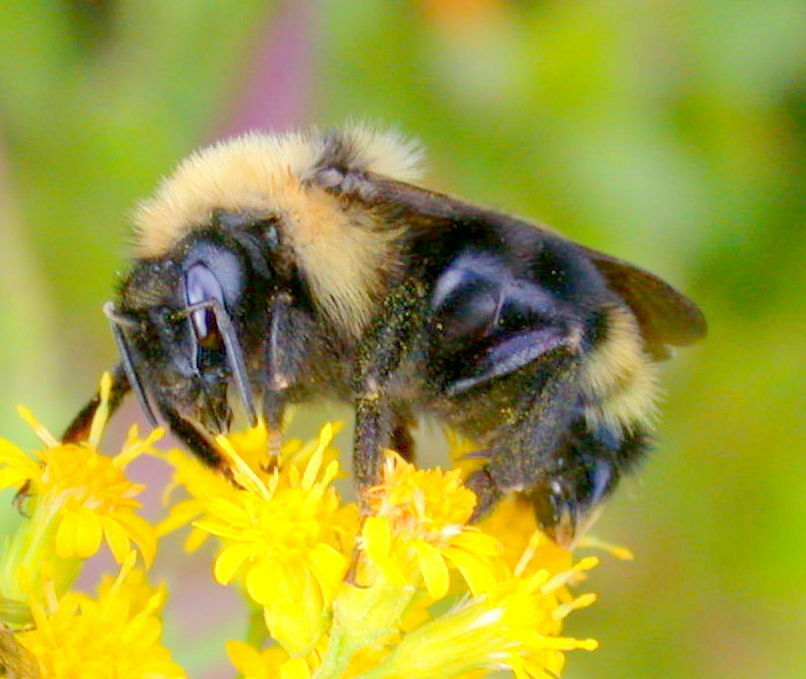It took a photo, a drawing, a naturalist’s boundless curiosity, and bee experts from across the nation for Vermont to claim a new bumblebee species for the state last week.
In 2008, artist and naturalist Susan Sawyer snapped a beautiful photo of a bumblebee in her yard. “I took this and many other photos of bees in my yard over the years,” said Susan. “In 2016, when I needed to draw a bumblebee, I used this one to work from.” She showed it to VCE staff at the time, and we knew it was a cuckoo bumblebee, but we weren’t sure which species. Then, we forgot about it. “The VCE team had ideas about what it was, but I don’t think they were 100% certain, with only this one photo; so, the drawing’s title was just Bombus sp., a Cuckoo Bumblebee,” she said.
A few weeks ago, Spencer Hardy, VAL wild bee expert, joined Susan and staff from Four Winds Nature Institute to teach them about native bees. She remembered the bee in question and showed him the drawing. He knew immediately it was a cuckoo bumblebee and might be an interesting record. Spencer asked her to post the original photo to the Vermont Atlas of Life on iNaturalist so he could easily share it with other experts to get their opinion too.
Right away, Zach Portman, a bee taxonomist at the University of Minnesota, made the identification—Indiscriminate Cuckoo Bumblebee (Bombus insularis). Bumblebee expert Leif Richardson from the Xerces Society took a close look and agreed. World expert John Ascher, an Assistant Professor at the National University of Singapore and Research Associate at Lee Kong Chian Natural History Museum and the American Museum of Natural History, concurred.
The Indiscriminate Bumblebee is native to western mountains and northern areas of North America. It belongs to the subgenus Psithyrus, the cuckoo bumblebees, which are social parasites of other bumblebees. The queens enter the nest of a host species, kill the resident queen, and then live and lay eggs in the nest. The host workers are forced by aggression and pheromones to rear the offspring.
This species has declined in some areas and disappeared from a few parts of its historical range. NatureServe ranks the Indiscriminate Bumblebee as globally vulnerable (G3), with Maine ranking it critically imperiled (S1) and New York calling it possibly extirpated (SH). Some of its host species have faced significant declines as well. Potential threats include habitat loss, pesticides, pathogens from domesticated bees, competition from introduced bees, and climate change.
Want to help VAL track bumblebees and other pollinators? Join the Vermont Atlas of Life on iNaturalist, snap images of the bees in your neighborhood, and add your sightings to the project. Susan’s finding shows how much you can discover in your own yard, local parks, and nearby greenspaces!







